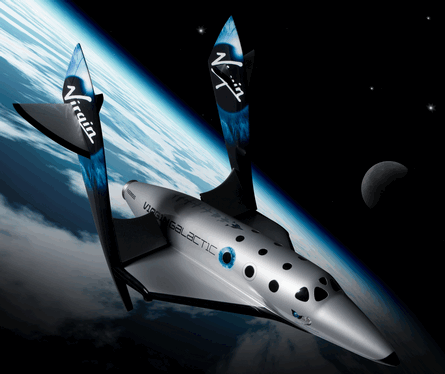As commercial spaceflight draws closer to reality, the US Department of Defense is officially interested.
The National Security Space Office (NSSO) has invited companies such as Armadillo Aerospace, Blue Origin, Virgin Galactic and Xcor to a conference from 24-26 February in San Antonio, Texas to discuss how suborbital technology could be applied to military needs.
The conference follows the release of an official request for information for a new programme called the "rapid delivery of military capabilities via space". The document seeks information from commercial firms about new technologies that could loft a 200kg (440lb) payload above 92km (57 miles) altitude to ranges up to 9,250km (5,000nm).
"Some of these [commercial spaceflight] companies are starting to become aware that their capability can be used for national security needs," says Lt Col Paul Damphousse, a US Marine Corps representative at the NSSO. "We're just trying to find out what types of activities are going on and if they're applicable to some of the needs that we have."
 |
|---|
© Virgin GalacticThe Burt Rutan-designed Space Ship Two for Virgin Galactic could be one of the suborbital technologies considered for military applications. |
"They set the bar very, very high," Damphousse says. "In this latest iteration we said: 'Well, do we necessarily need that near-instantaneous crisis response? Do we need to attain orbit? Or is this something that can be shorter range? Let's look at the suborbital band'."
The USMC is no longer the sole organisation driving the concept. Damphousse is a marine officer, but he is now assigned to the NSSO, an organisation within the Office of the Secretary of Defense.
The conference is jointly sponsored by the NSSO and the Air Force Security Forces Command, whose mission includes rapid response to global threats to air bases. US Special Operations Command also has confirmed interest in adapting suborbital technology for military use.
Moreover, the NSSO has also facilitated the beginnings of an official concept of operations for the use of a military suborbital space fleet, and representatives of the armed services and combatant commands met last September to draw up a classified draft document, Damphousse says.
"A lot of missions that can be done are high-speed, point-to-point," he says. "That can be logistical missions or putting [an unmanned air vehicle] somewhere in a very short period of time, or an unmanned ground vehicle."
But meeting such "near-term" needs for suborbital transport should only be the beginning, he adds. The ultimate goal is to scale up the system to meet the USMC's documented requirement for a manned vehicle that can move small units anywhere in the world within 2h. "People talk about putting boots on the ground, but it's more than that," Damphousse says. "It's eyes, ears and brains on the ground - what some folks in the Marine Corps call situational curiosity."
The next step after the conference has not been defined. Damphousse's team will write up after-action reports based on discussions between industry and military officials. Any decision to proceed to a demonstrator or acquisition problem will require a decision to commit funding. "The next phase may not be anything," he notes. "We have to figure out if there is a next phase and what it should be."
But the NSSO has already identified an "attractive" possibility. The USAF's Space and Missile systems Center has recently disclosed plans to develop a replacement for the evolved expendable launch vehicle that features a reusable first stage and an expendable upper stage. "What's very attractive is that reusable first stage can be used for some of the things we are doing," Damphousse says.
Leveraging suborbital technology for military purposes is also attractive to some space policy analysts.
"Seeking information from the potential suborbital suppliers, given the interest in suborbital tourism, is not a bad idea," says Scott Pace, director of the Space Policy Institute.
However, leveraging commercial suborbital technology for military missions is one thing, but developing a high-speed, point-to-point transport to infiltrate small units in crisis situations anywhere in the world is another, he adds. "If you deliver a squad [of marines], that's good enough to exactly do what?"
Pace adds that developing such a capability would require a substantial investment, which would raise questions about the potential benefit. "Would I rather spend a dollar on this capability or strengthening conventional airlift?", he asks.
Source: Flight International


























